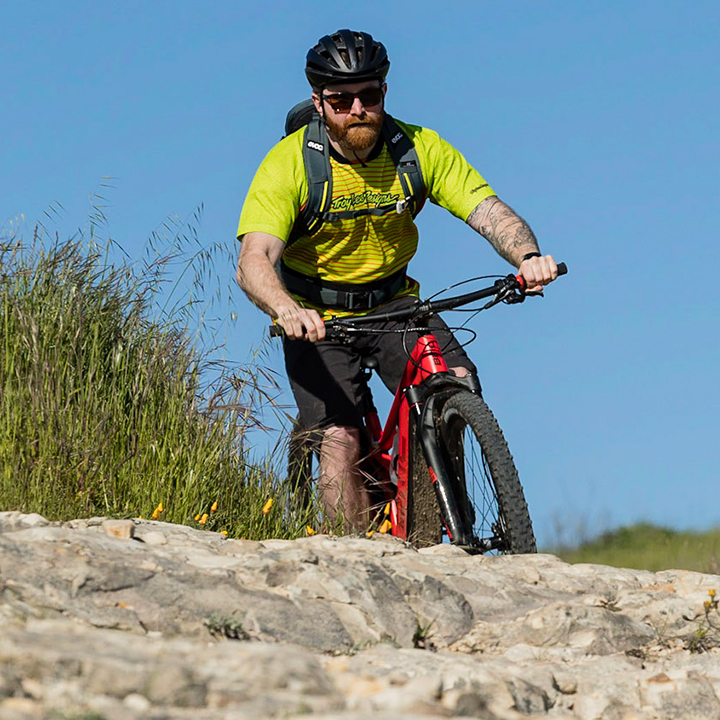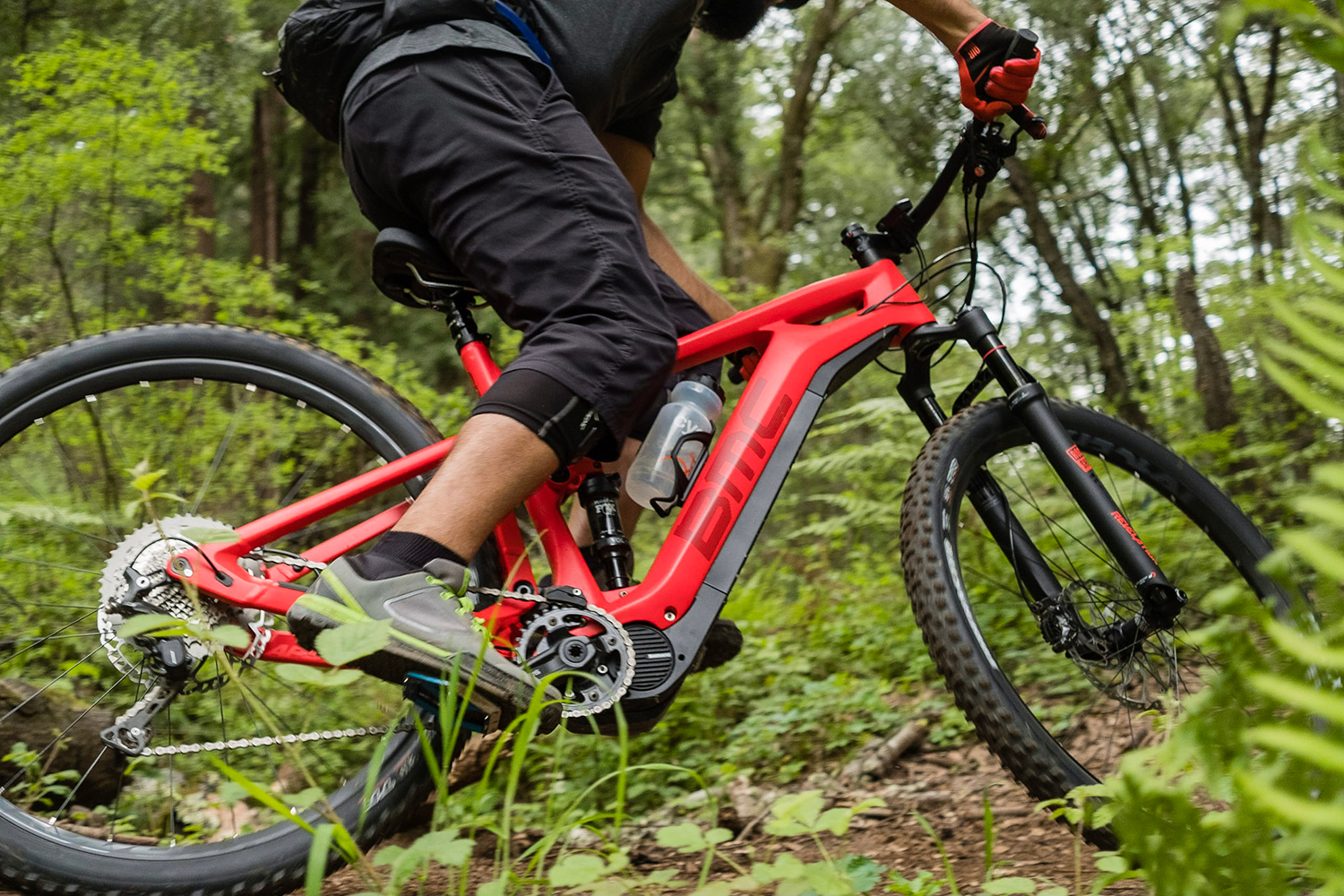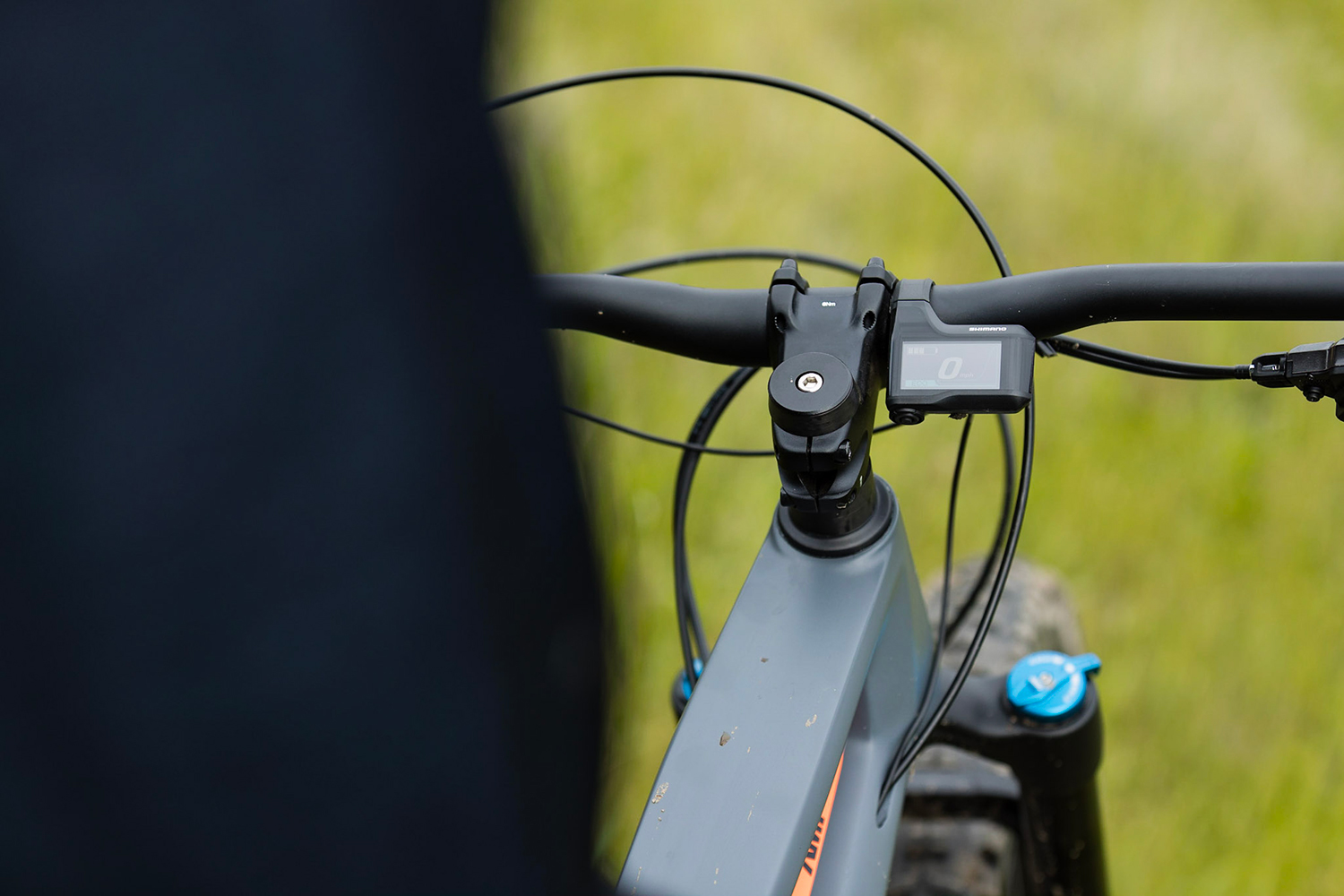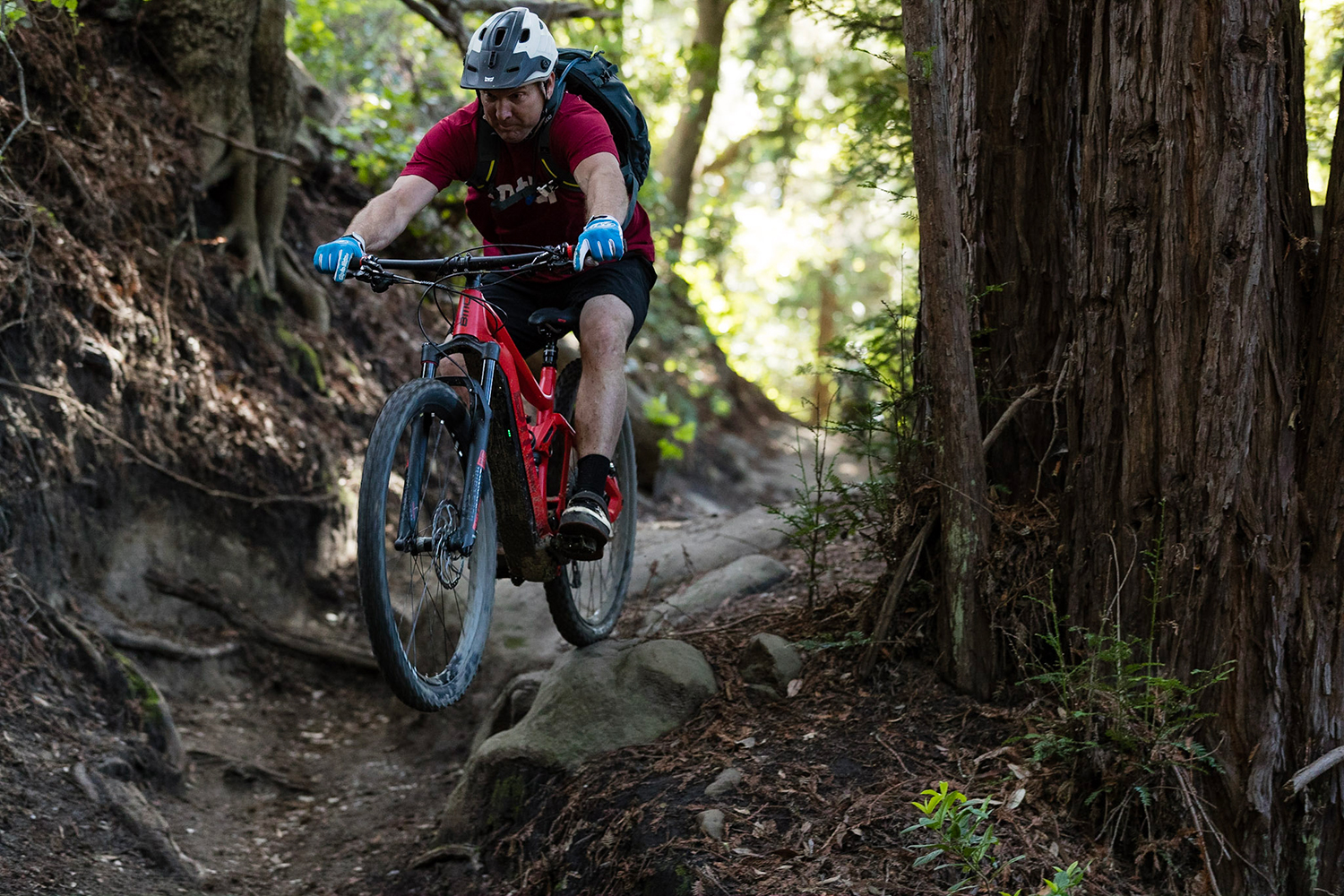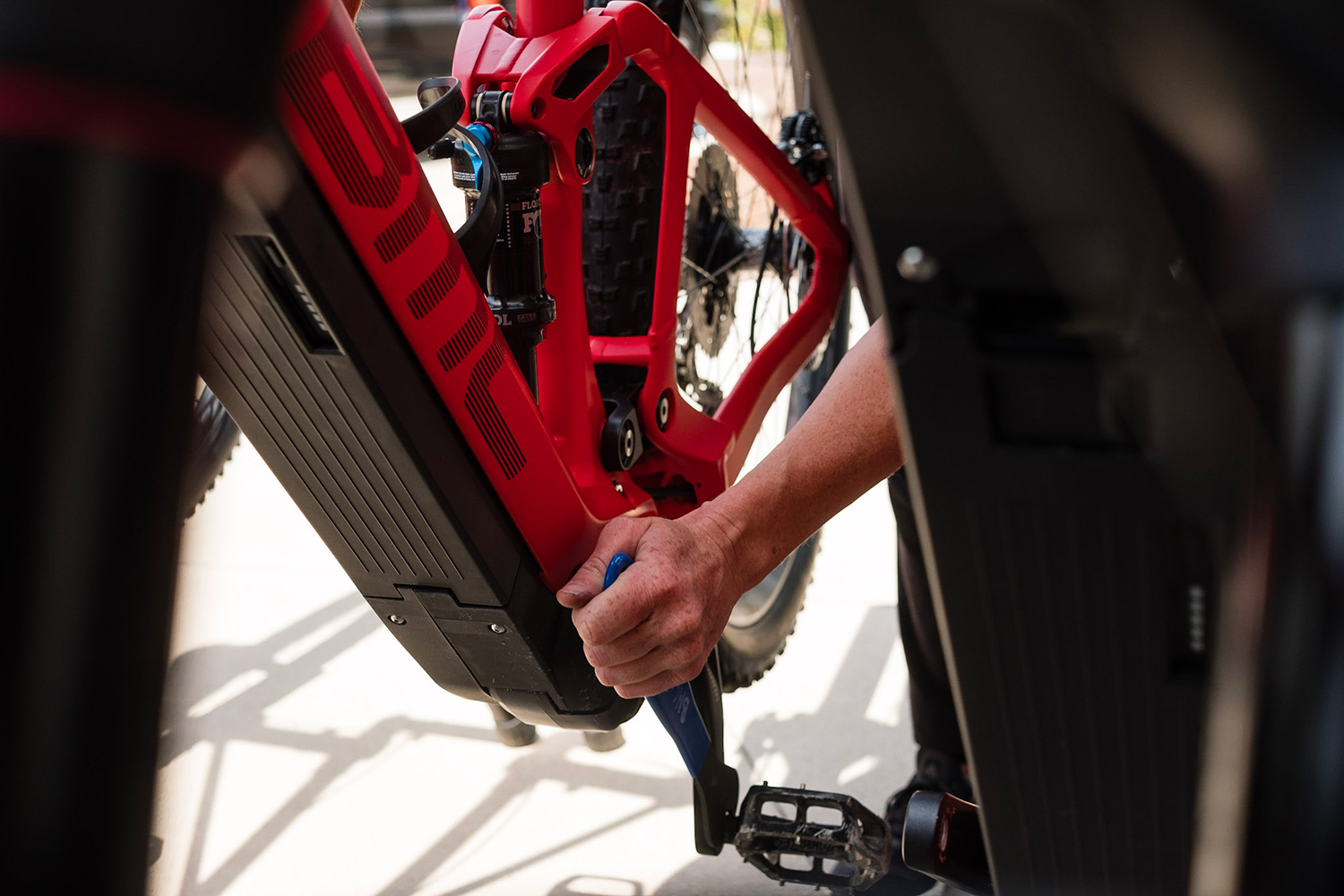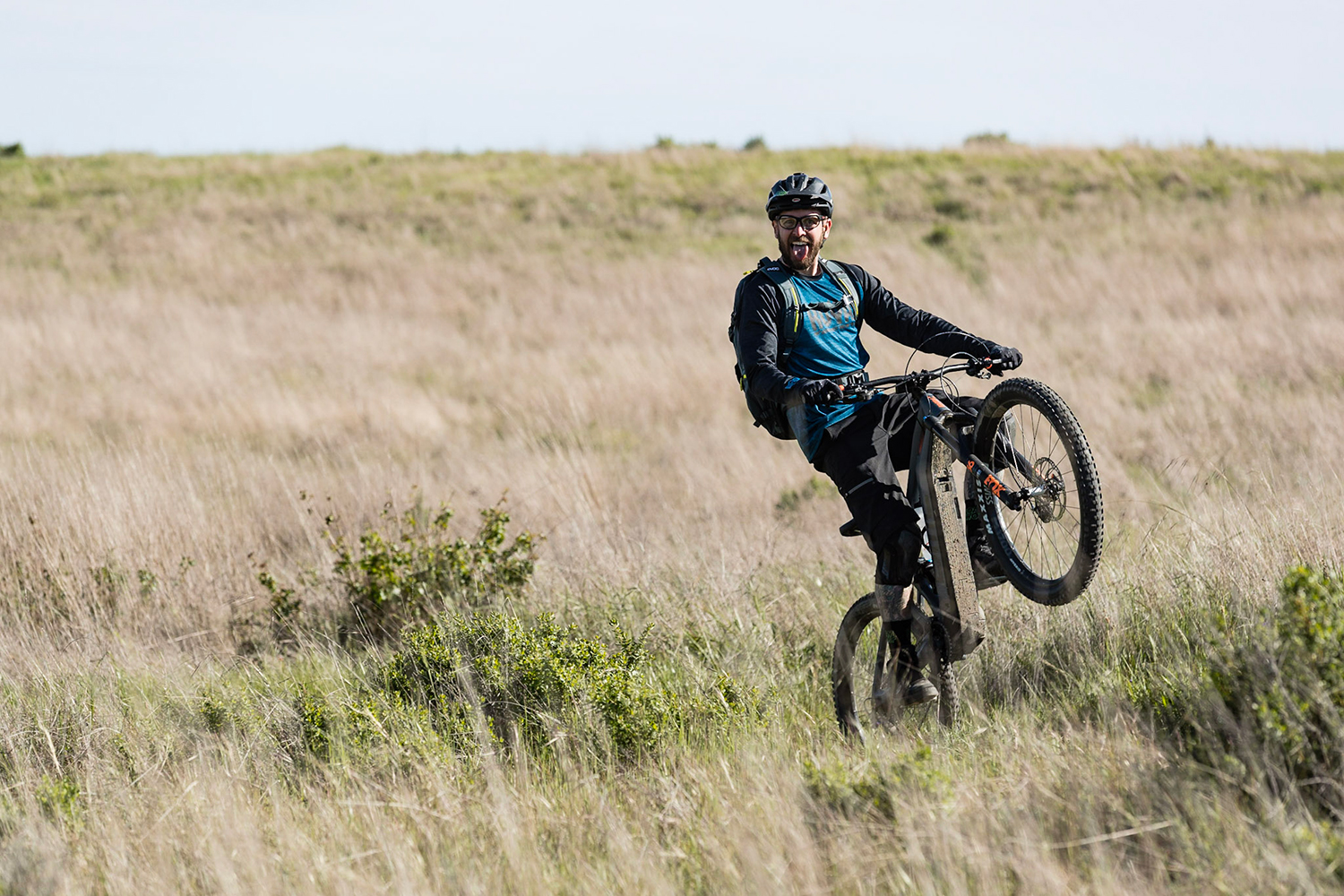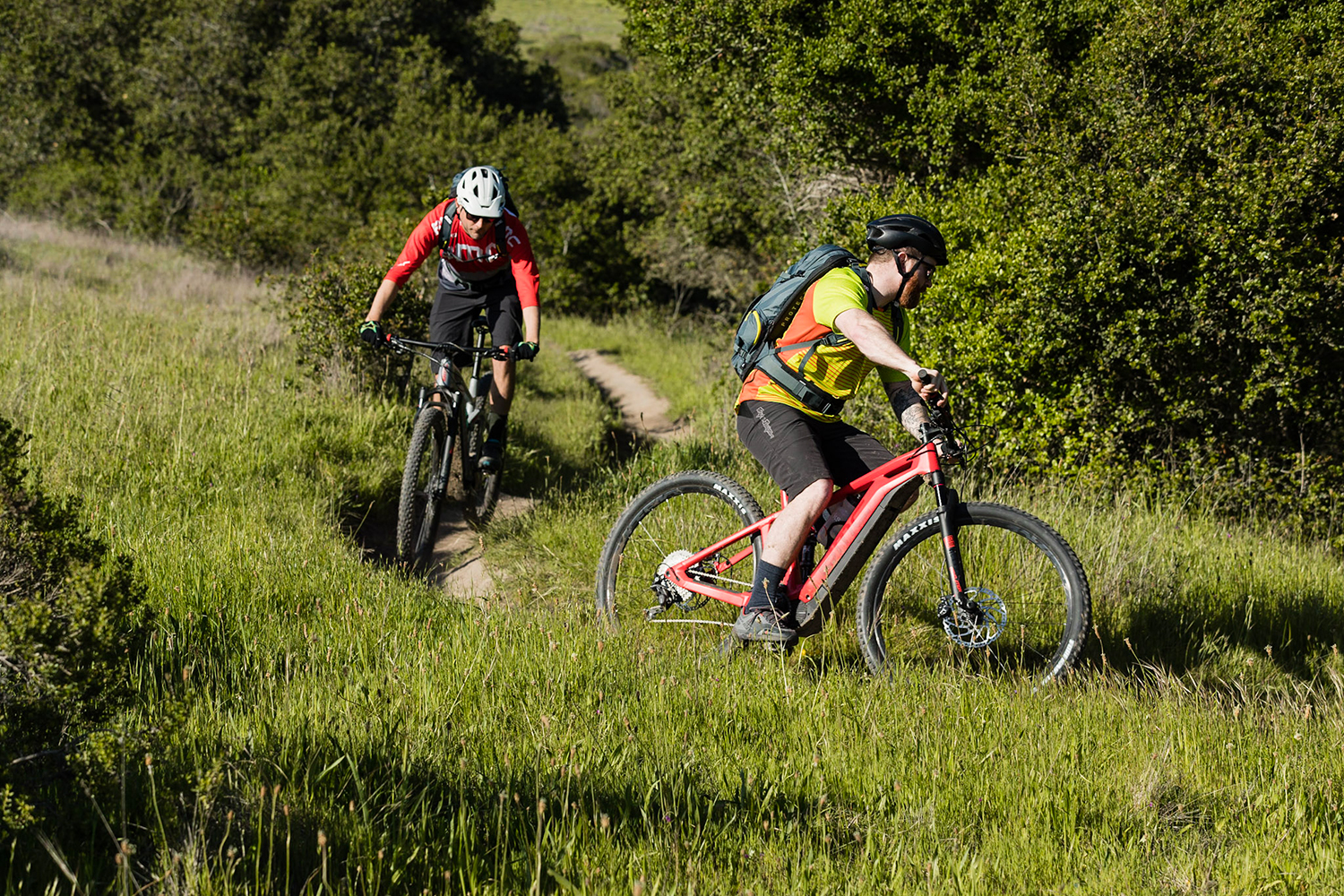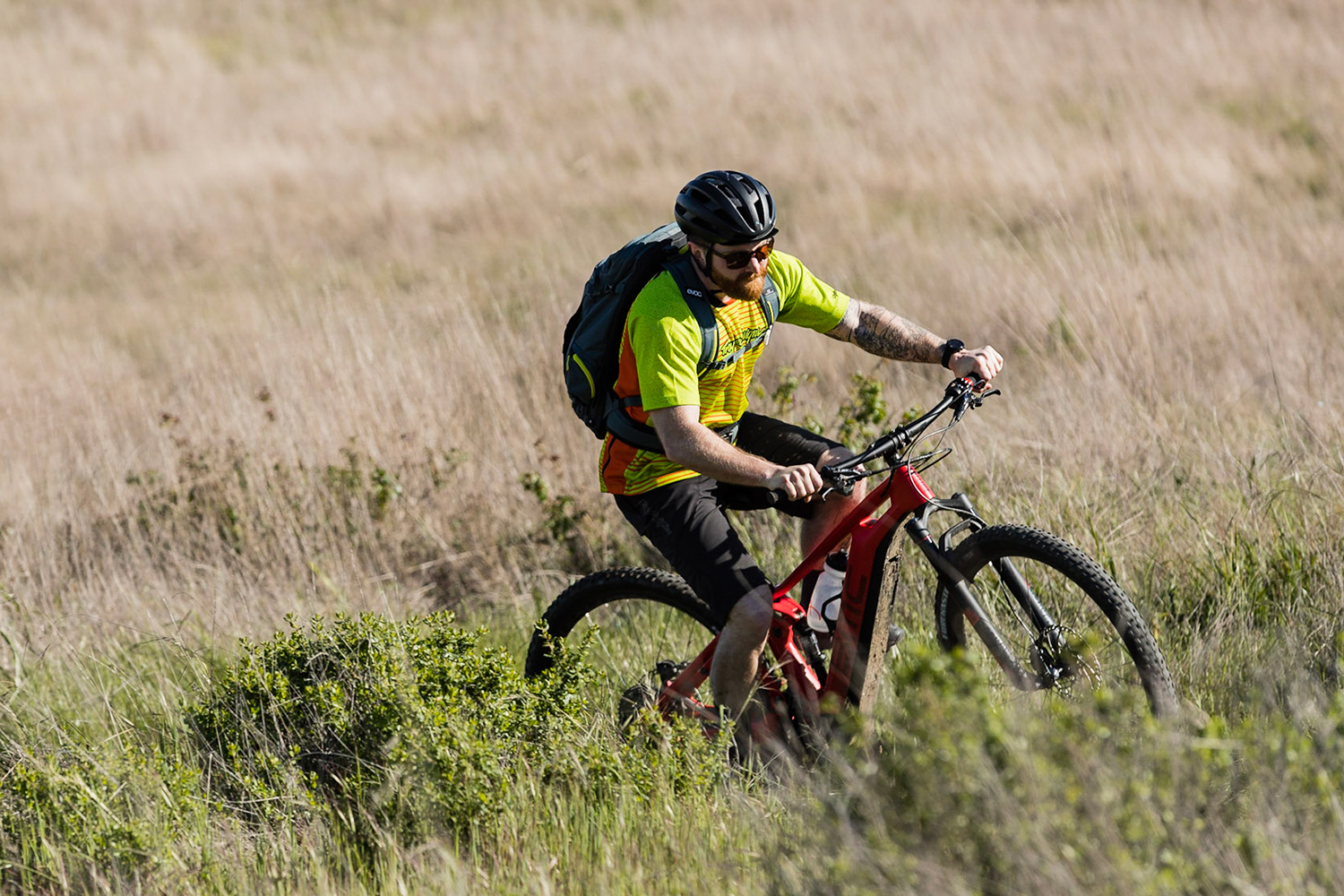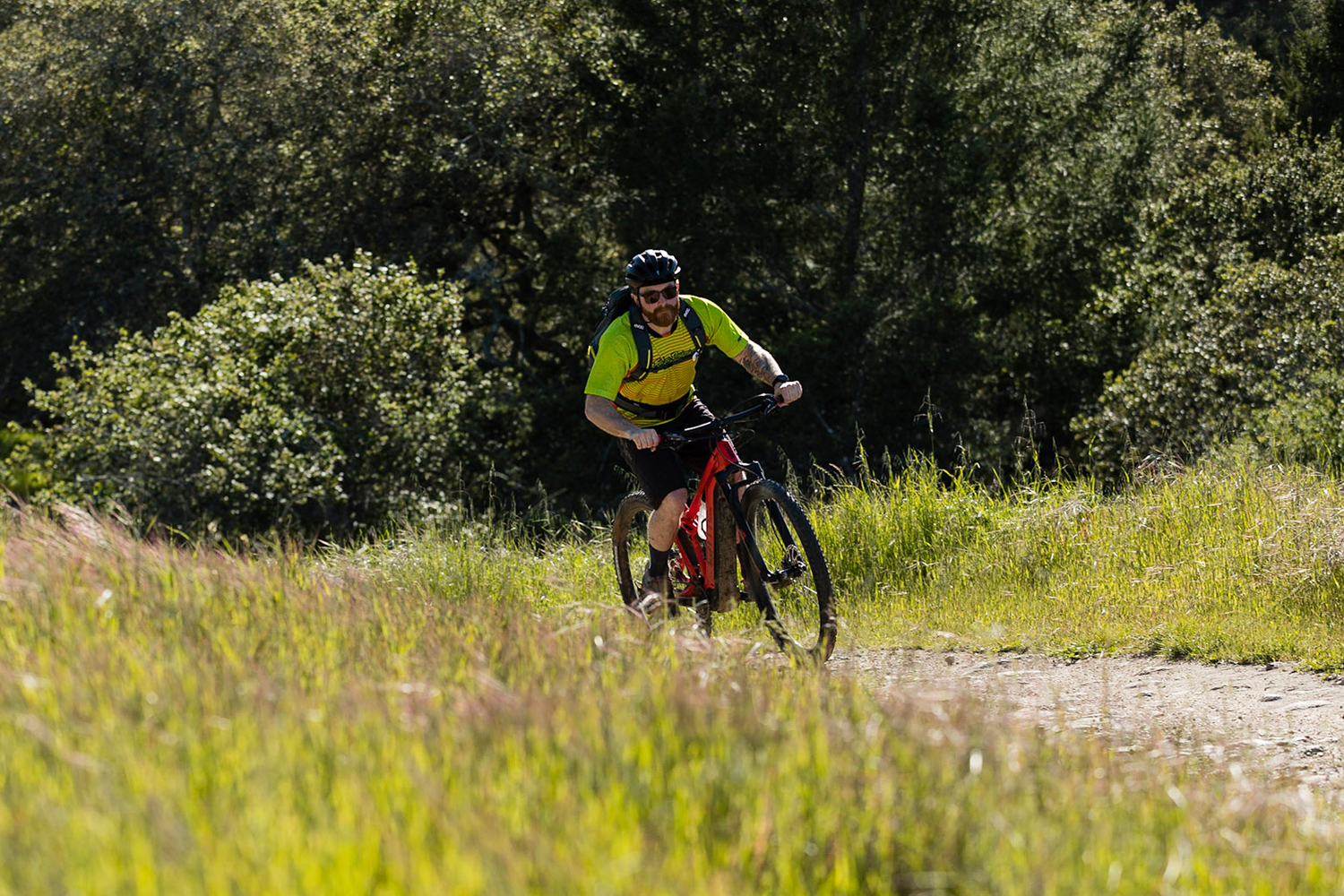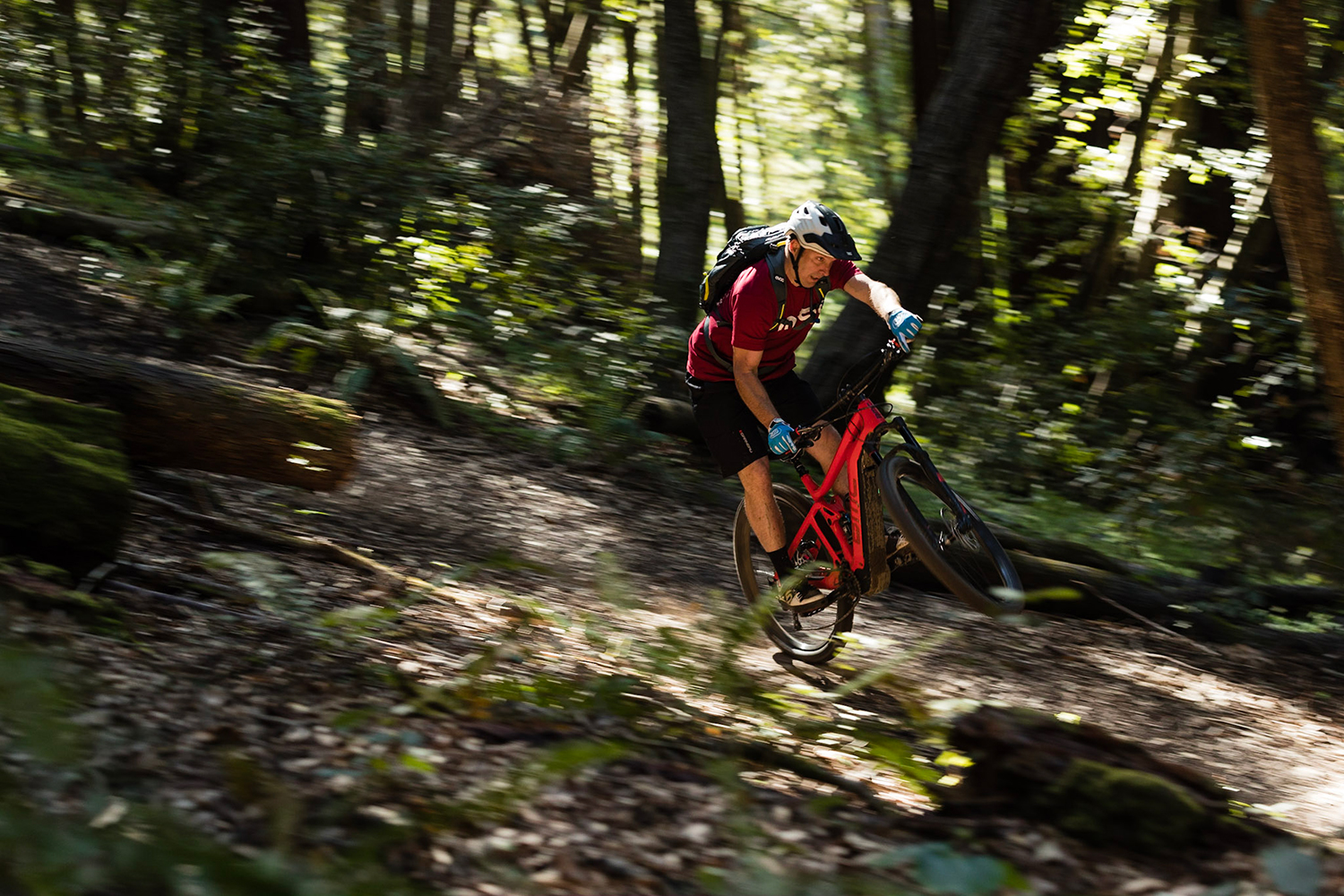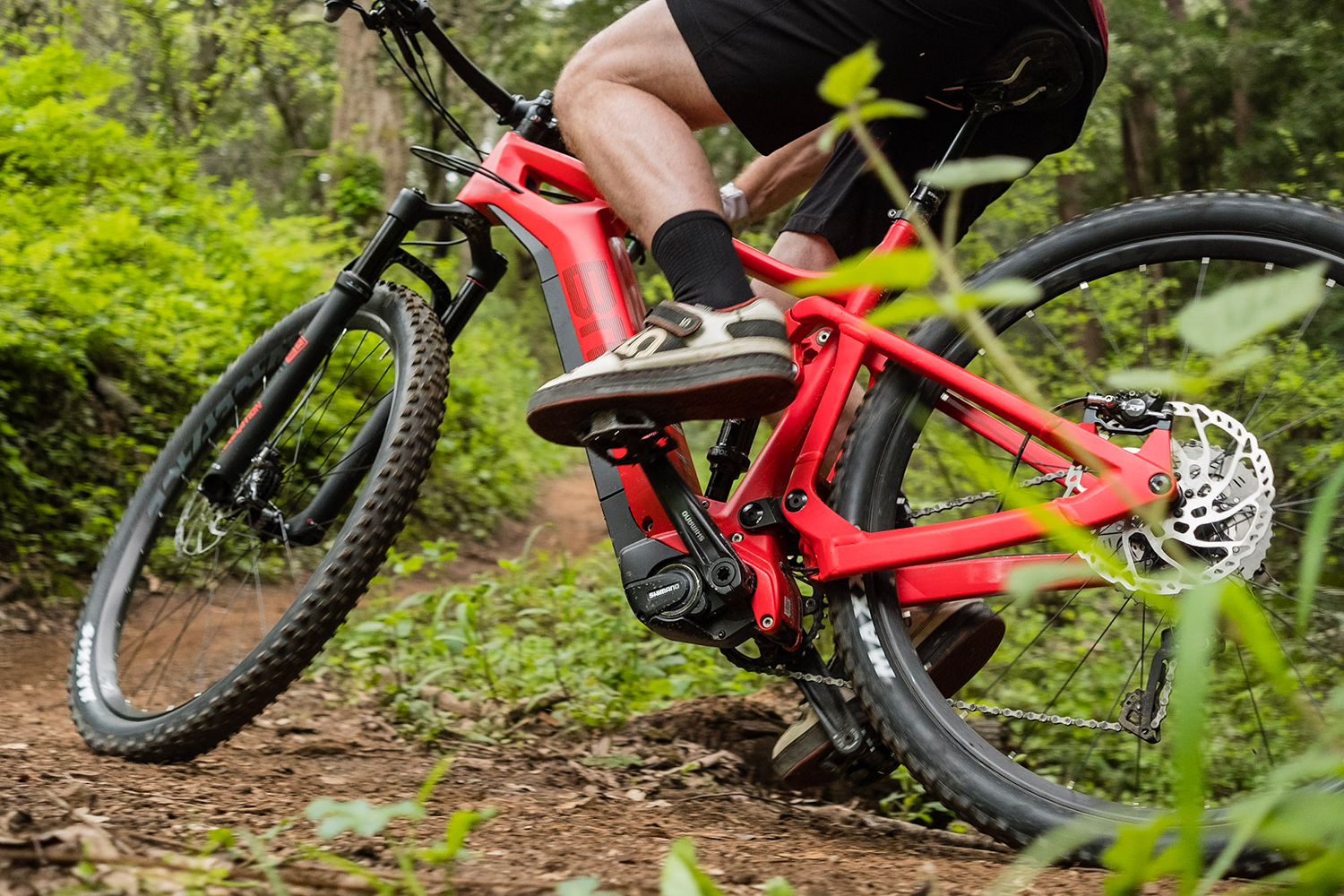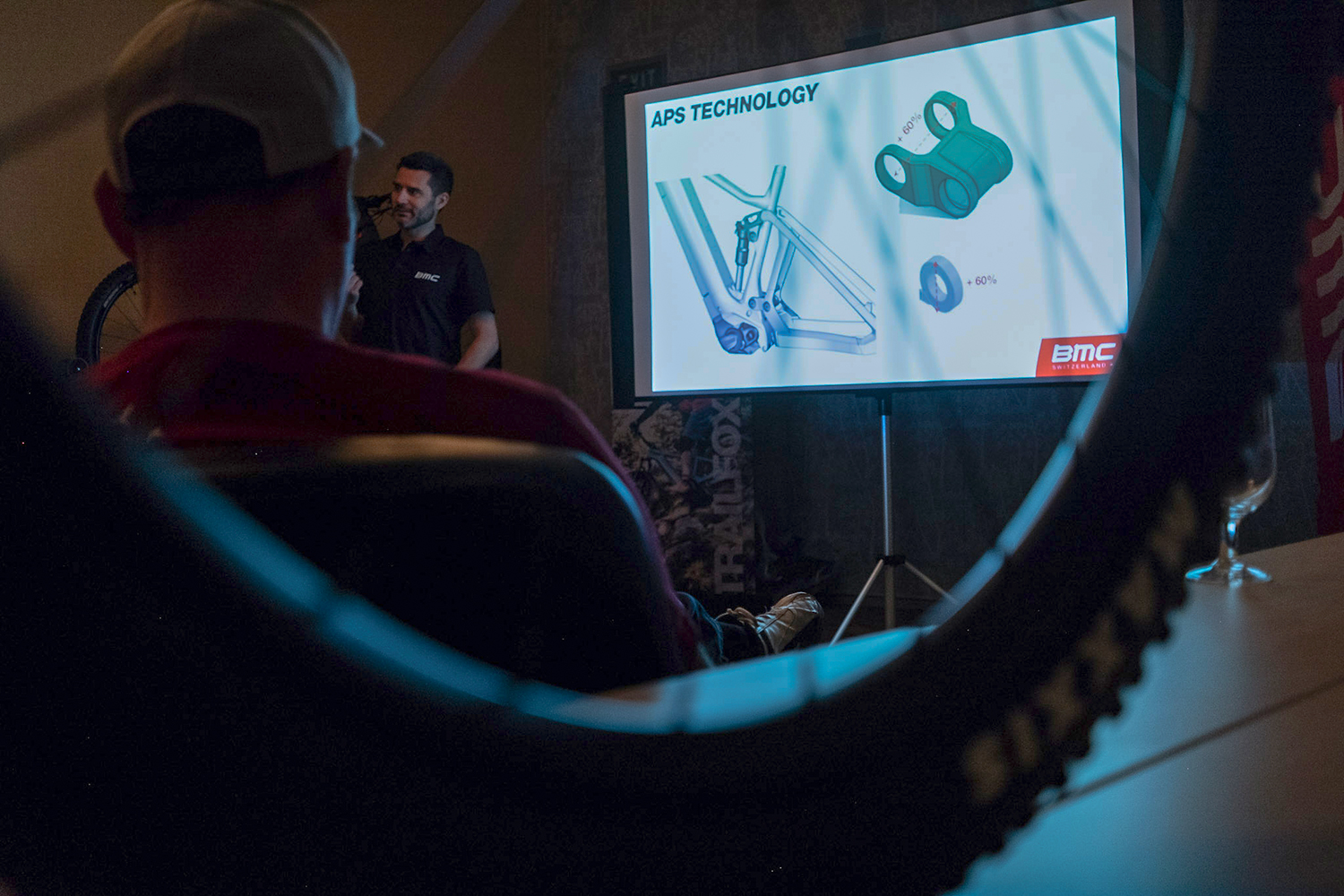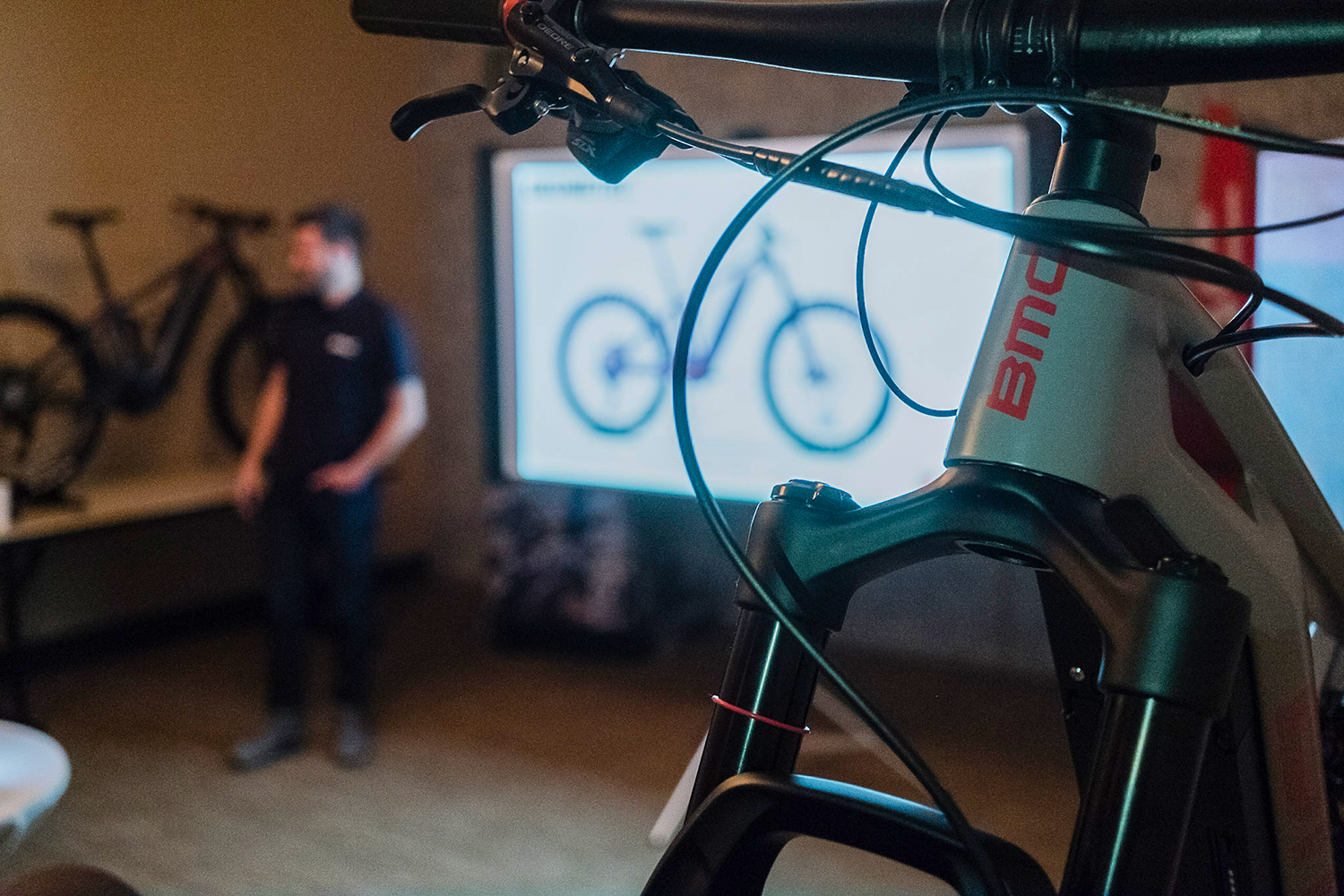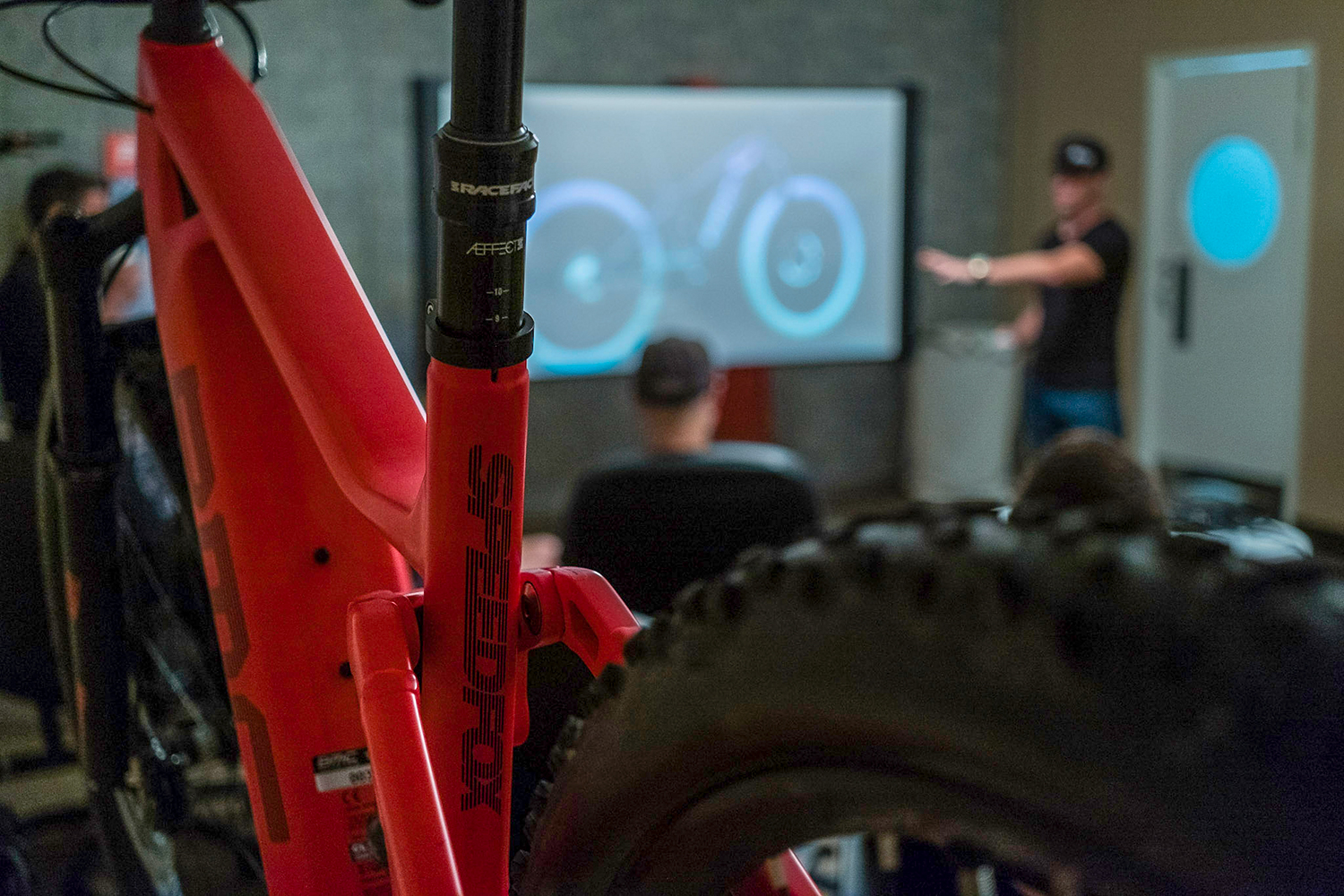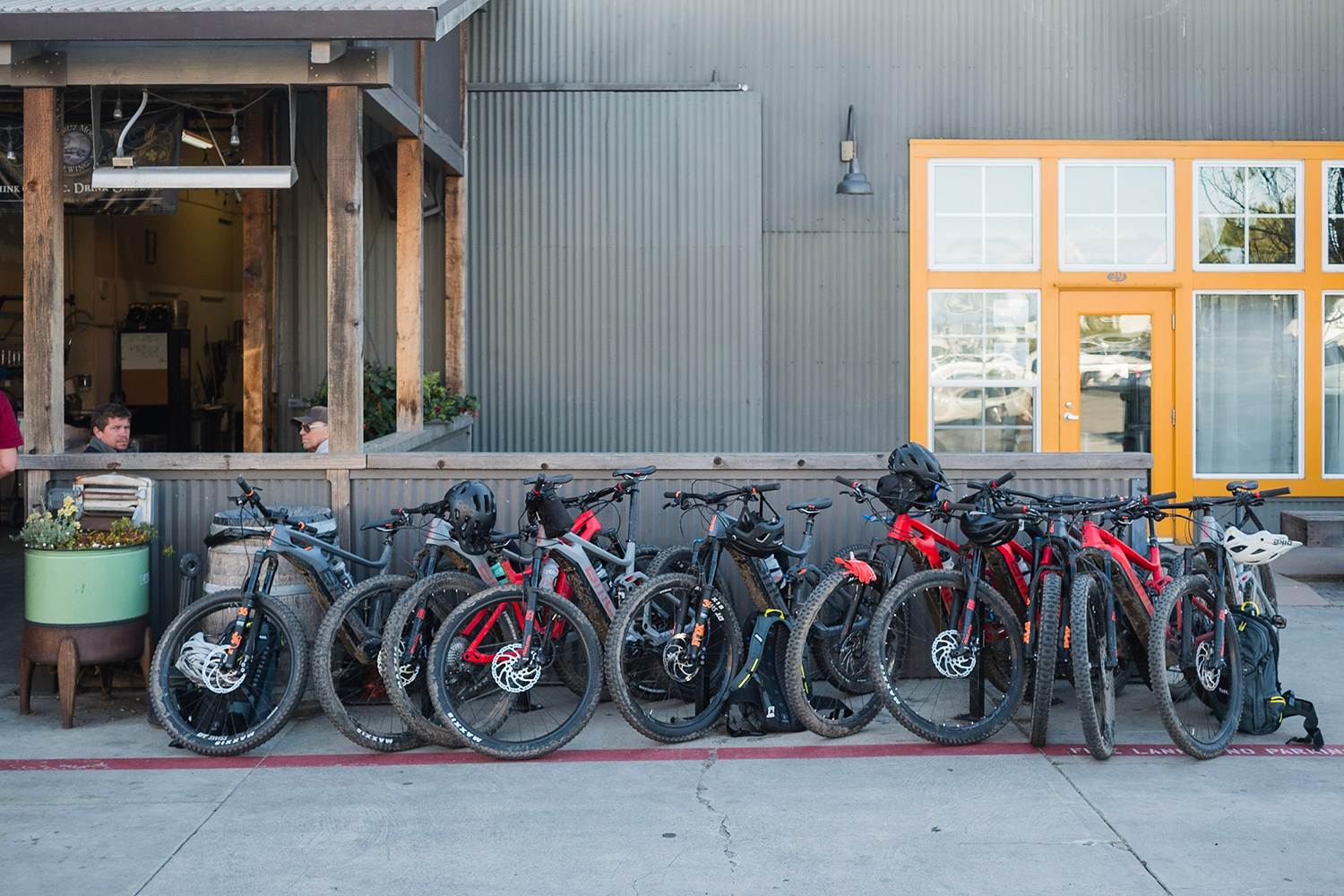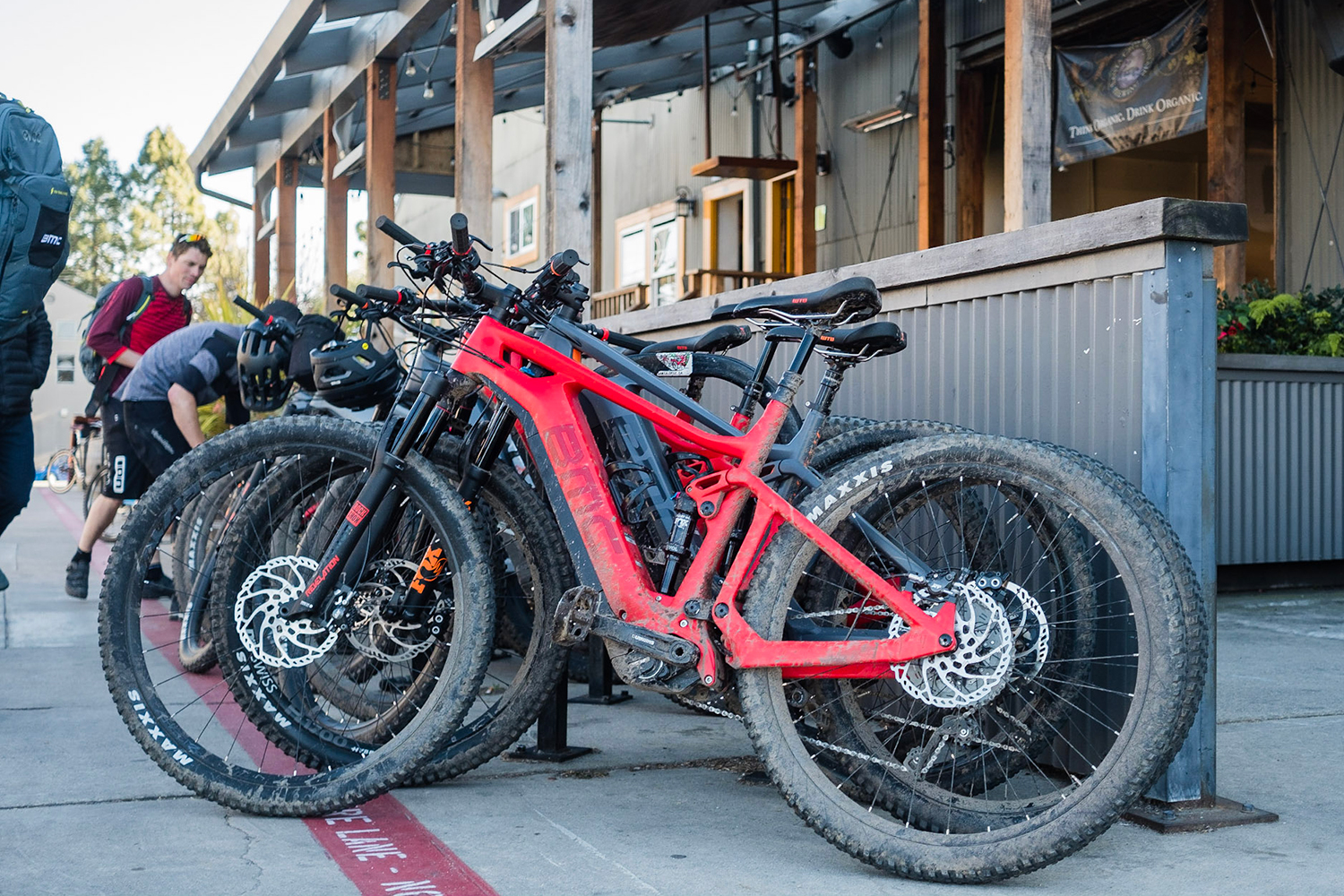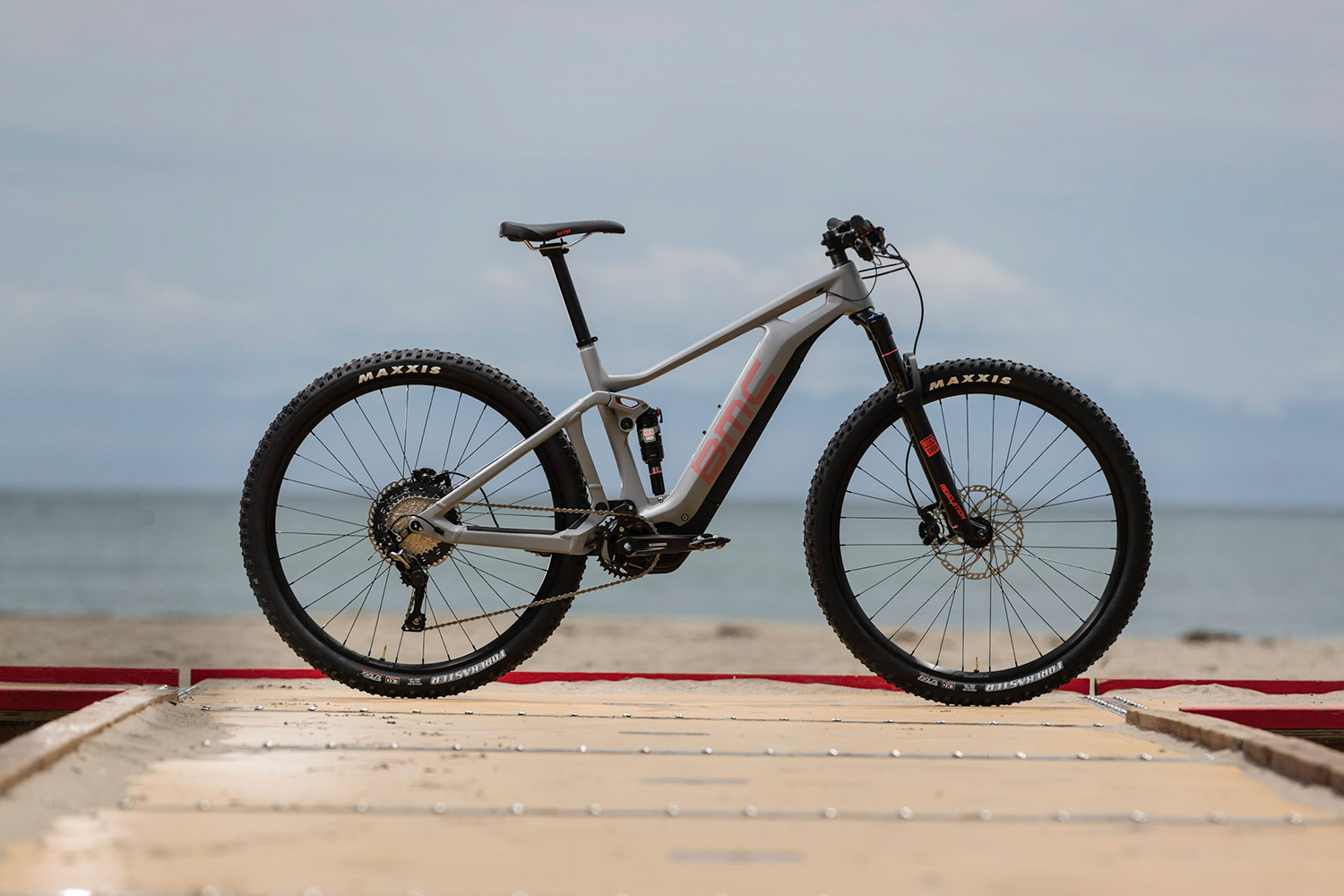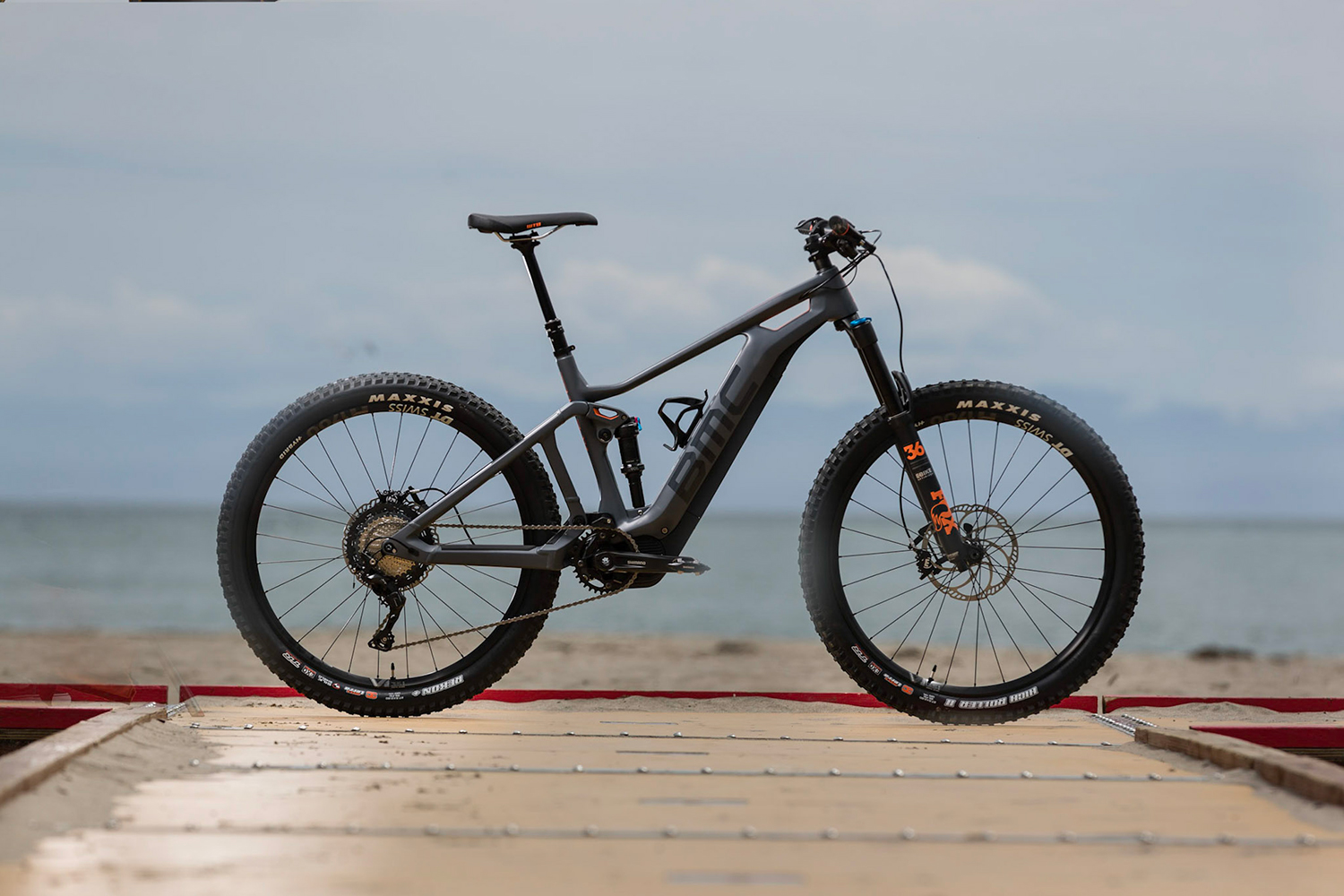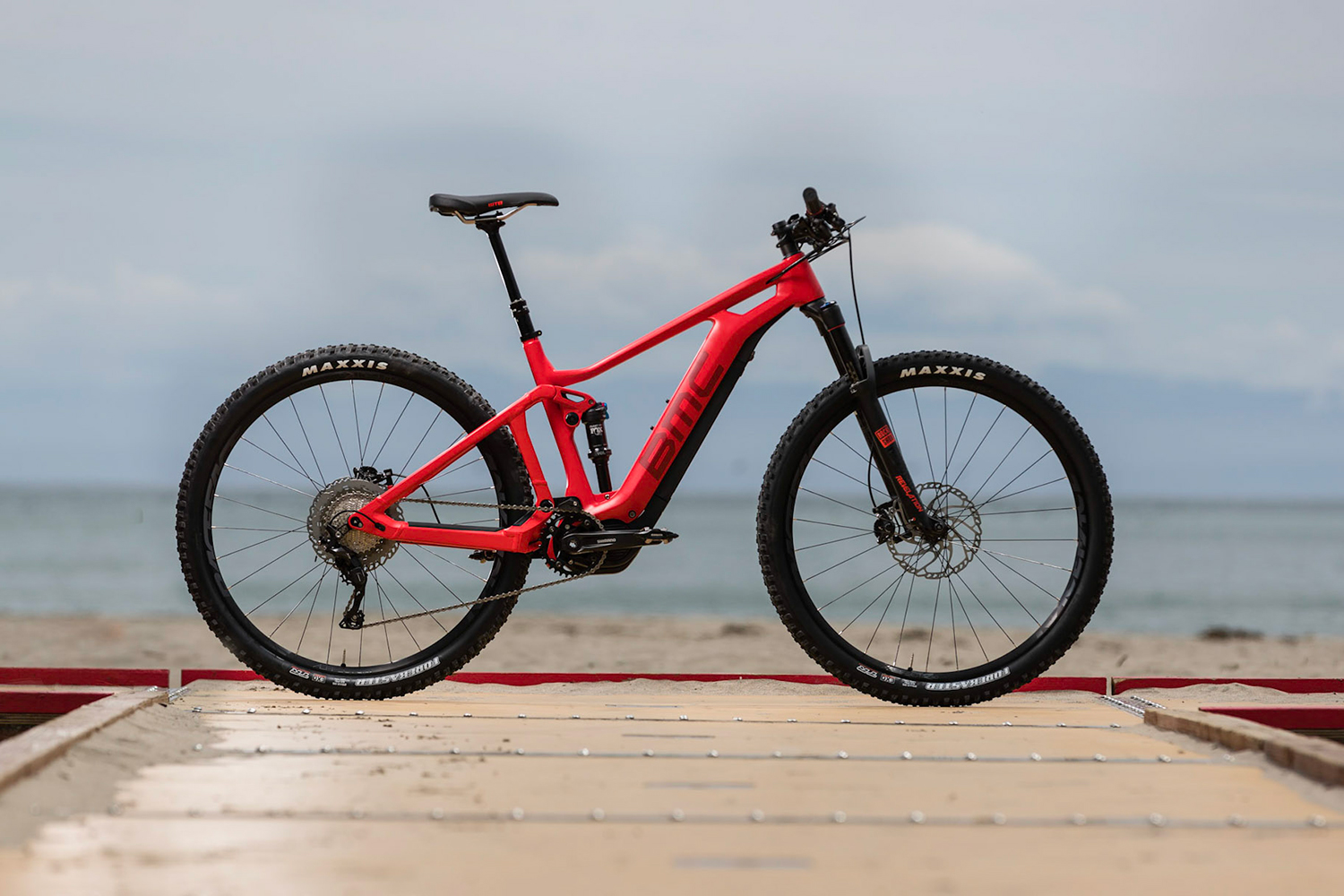As I barreled down a rocky, single-track mountain bike trail, knuckles turning white as a ghost, I realized it: I’m not a mountain biker. But for the sake of sweat-testing BMC Switzerland’s new line of electric mountain bikes, I hopped on its apple red Speedfox Amp with aplomb. After all, I had been on mountain bikes in the past, but even a few runs at the downhill park in Whistler, Canada couldn’t prepare me for even the modest tracks of Wilder Ranch State Park in Santa Cruz, California. If only I’d known that before I started down the trail.
Perhaps, the main reason I saddled up with the BMC team was to get a taste of the electric mountain bike craze for myself. For the last several years, regular ebikes have taken the cycling and commuting industries by storm, offering an environmentally- and fitness-friendly way for people to get around town. Some may criticize the lack of energy required to get an ebike moving, but the statistics show that more people commute to work via bike each year and the ebike industry is only helping improve those numbers. With more people commuting on bikes — be it of the electric or traditional variety — the idea is that fewer cars will clog highways and impact the environment. A suitable argument for ebikes in general, but the problem baked into electric mountain bikes isn’t one of environmental friendliness — it’s one of precedence.
The electric mountain bike dilemma
Cyclists may casually lament the increase of people riding ebikes but the mountain biking industry seems to downright loathe the electric uptick. To its credit, the reasons are valid. Some say it’s important to earn your laps or that lowering the barrier for entry may create unnecessary choke points on trails. Others believe a mountain bike with a motor may likely put amateur riders on advanced trails, thus endangering everyone. Armed with an argument of safety, as well as a position of pride or even seniority, the disdain traditional mountain bikers feel toward ebikes of any discipline is reasonable. Hell, even BMC Switzerland, a company rooted in road bikes, understands the inherent schism.
The problem baked into electric mountain bikes isn’t one of environmental friendliness but one of precedence.
“Electric mountain bikes were not a natural progression for BMC,” said Antoine Lyard, BMC Switzerland’s mountain bike product manager, at a press event Digital Trends attended. “We really had no idea what an electric mountain bike should even ride like, so we went to our competitors and bought what they sold to find what we liked and didn’t like. Then we built our own fully-functional prototype bikes to test our theories.”
From a marketing standpoint, BMC’s entry into the sector was a smart one. As it witnessed the trend booming in Europe, the company made a decision to enter the business, despite not knowing exactly how it’d be received. However, instead of creating an entirely new lineup of ebikes, BMC electrified two existing models in its catalog and simply added the “Amp” moniker at the end — the Trailfox Amp alongside the smaller Speedfox Amp that I rode. Rifts within the industry aside, BMC embraced the innovation.
Amateur hour
While a bike manufacturer sees dollar signs, mountain bikers see amateurs riding where they shouldn’t — for the most part, at least. Take my outing with BMC, for instance. Granted, I was riding in a pack led by the brand itself, meaning I wasn’t simply exploring and ending up in areas I shouldn’t be, but the skill level required for where we rode was several notches above my comfort level.
On especially gnarly descents I could simply hop off the bike, but the true problem occurred during climbing. Standing between us and a few paths we rode were hills which required a special kind of sweat equity — the kind that separates seasoned mountain bikers from novices. On an electric mountain bike, however, all I needed to do was flip the bike into “Trail” mode and shift a few gears to start climbing with relative ease. While it wasn’t a walk in the park, and I wouldn’t necessarily consider myself out of shape, without a motor, I’d have been toast after our second or third big climb.
The line between whether an electric mountain bike is necessary as opposed to extravagant is a little blurry.
Even with my inadequate skillset, I’m not the problem. If I were to own one of BMC’s electric mountain bikes, I’d know better than to stick my tires where they don’t belong. It’s the overzealous newcomers who pose a bigger threat and tend to be the prime target of the animosity felt by traditionalists. I can’t say I blame them, either. It’s easy to be territorial — even to a fault — but with genuine concerns of rider safety and clogged trails serving as more than just inconveniences, the line between whether an electric mountain bike is necessary as opposed to extravagant is a little blurry.
But that’s the beauty of BMC’s new bikes. They straddle the line between extravagance and necessity, offering amateurs or seasoned riders a little of both. While it made steep ascents seem like small hills, the smoothness of the pedal-assistance made it feel as though we weren’t biking with a motor at all. Designed with three different pedal-assist modes (Eco, Trail, and Boost) and powered by the Shimano STEPS system, the bike gave us the ability to add or subtract power on the fly with as much ease as shifting gears. Due largely to the tight trails we rode, we hardly switched out of Eco mode, only kicking it into Trail during climbs.

The changing of the (old) guard
While the trip through Wilder Ranch State Park served as a wake-up call regarding my ability on a mountain bike (or lack thereof), it also taught me something else: Staunch mountain bike traditionalists can learn to appreciate electricity in a bike.
At the end of our ride, and while I licked my wounds with a well-earned pint of beer, it was obvious every other attendee was an extremely dedicated mountain biker. While their proficiency on the trail already suggested this, the fact most considered it a cakewalk proved it. In other words, these were the people theoretically chafed by the growth in popularity of electric mountain bikes. To my surprise, they seemed to be easily swayed by its convenience much like early adopters of regular ebikes were. It even occurred the same way — by simply riding one for the first time.
The group was a mixed bag of freelancers and editors but each one was a purist. While many admitted to originally feeling contempt for electric mountain biking — including an initial desire to avoid coverage in fear of losing readers or subscribers — they confessed to respecting its benefit. The same drawbacks remained but what stuck out to them was its convenience.
More days than not, they’d be found on a standard mountain bike. But if they wanted to ride as daylight faded, or simply weren’t feeling on top of their game, they’d hop on an electric mountain bike instead. This allowed them to bike when they typically wouldn’t and when mountain biking is your life, that’s invaluable.
The path forward is motorized
If some of the most devoted mountain bike traditionalists can be convinced of its benefits, then there needs to be a different discussion about how to embrace the electric mountain biking industry — its growing popularity alone shows it’s not going away anytime soon, either, despite any controversy.
So, what’s the fix? Since electric mountain bikes add an element of unpredictability to a sport chock-full of enough danger on its own, you could start by putting the onus on the riders themselves. Not only would this encompass riding within their means, but a firm grasp on education of the sport itself would be critical. This won’t just put riders on trails more suited to their skills, it’ll save countless broken bones in the process — and in an extreme sense, people’s lives.
How this immediately occurs is a little murky. Standard ebike courses exist a mere Google search away but those won’t necessarily cover the world of electric mountain bikes. They’ll serve as a good foundation to anyone first getting into the sport but will assuredly lack information pertaining to some of the pillars of mountain bike safety. An immediate fix is simply taking regular mountain bike courses or reading up on rider and trail etiquette.
Though education and research may one day challenge the existing attitude toward electric mountain bikes, until more people simply ride one, the status quo figures to remain. Some traditionalists may prefer it that way but as manufacturers are adapting to what its consumers want, so too should the industry and its loyalists.
